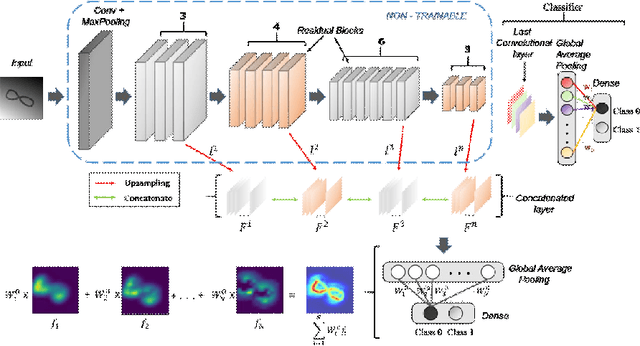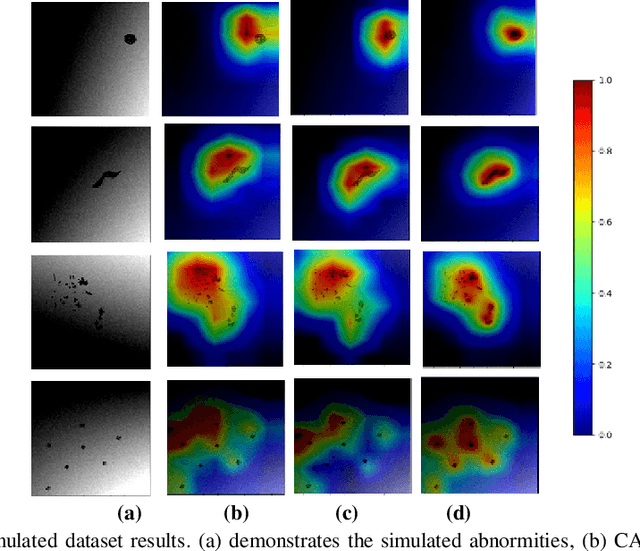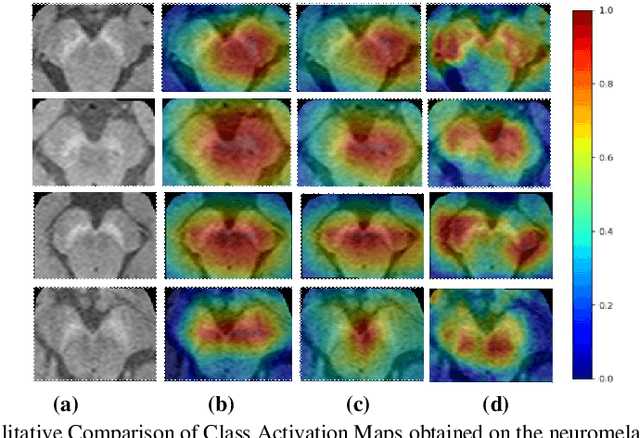Tanay Chougule
HR-CAM: Precise Localization of Pathology Using Multi-level Learning in CNNs
Sep 23, 2019



Abstract:We propose a CNN based technique that aggregates feature maps from its multiple layers that can localize abnormalities with greater details as well as predict pathology under consideration. Existing class activation mapping (CAM) techniques extract feature maps from either the final layer or a single intermediate layer to create the discriminative maps and then interpolate to upsample to the original image resolution. In this case, the subject specific localization is coarse and is unable to capture subtle abnormalities. To mitigate this, our method builds a novel CNN based discriminative localization model that we call high resolution CAM (HR-CAM), which accounts for layers from each resolution, therefore facilitating a comprehensive map that can delineate the pathology for each subject by combining low-level, intermediate as well as high-level features from the CNN. Moreover, our model directly provides the discriminative map in the resolution of the original image facilitating finer delineation of abnormalities. We demonstrate the working of our model on a simulated abnormalities data where we illustrate how the model captures finer details in the final discriminative maps as compared to current techniques. We then apply this technique: (1) to classify ependymomas from grade IV glioblastoma on T1-weighted contrast enhanced (T1-CE) MRI and (2) to predict Parkinson's disease from neuromelanin sensitive MRI. In all these cases we demonstrate that our model not only predicts pathologies with high accuracies, but also creates clinically interpretable subject specific high resolution discriminative localizations. Overall, the technique can be generalized to any CNN and carries high relevance in a clinical setting.
 Add to Chrome
Add to Chrome Add to Firefox
Add to Firefox Add to Edge
Add to Edge